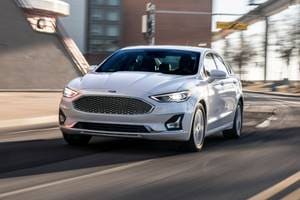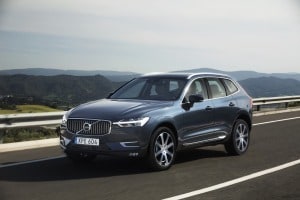Rising Unemployment Rate Not a Bad Sign for New Car Sales

New car sales showed renewed momentum in May, as the seasonally adjusted annual rate (SAAR) climbed to 15.3 million after falling to 14.9 million in April. Many of the same key factors continued to drive sales, including the release of pent-up demand, expanded credit availability and low interest rates, and wealth effects from the strong stock market and growing housing recovery. But, one key ingredient to continued auto sales growth failed to deliver as expected: the labor market recovery. The U.S. unemployment rate rose in May, according to data from the Bureau of Labor Statistics. The increase from 7.5 percent in April to 7.6 percent in May missed the consensus prediction of holding at 7.5 percent and disappointed analysts expecting stronger labor market performance.
The good news is that a rise in the unemployment rate does not necessarily mean slower auto sales to come. In this case, it indicates that the labor market recovery has the potential to expand to more workers (and facilitate more car sales) because the rate increased due to more workers joining the labor force. At the same time, a higher unemployment rate could further help car sales by delaying cutbacks to the Federal Reserve's current quantitative easing program — a program of buying Treasury and mortgage bonds that has generated wealth effects and lowered interest rates, both of which have recently supported car sales.
Rising Unemployment Rate Could Mean More Workers Available to Buy Cars in the Future
The unemployment rate refers to the percentage of the total work force that is unemployed but actively seeking employment and willing to work. A rising unemployment rate can mean that more workers have lost their jobs, but it can also mean that more people have joined the work force and are seeking employment. In May, the unemployment rate rose due to the latter — a sign that the labor market recovery has gained enough strength to lure back discouraged workers who had dropped out of (or failed to enter) the labor market in recent years. The addition of these workers to the ranks of the unemployed does not imply that more consumers will be unable to buy new cars, since consumers not working or seeking work are unlikely to be in a better position to buy a new car than when they are actively seeking work but still unemployed. Rather, the growing work force suggests that new car sales could grow in the near future as these workers find jobs and have both a greater need for a car and greater means to buy one.
Rising Unemployment Rate Could Delay Fed Tapering Plans
Another potential positive from the rising unemployment rate could be a delay in the tapering of the Federal Reserve's current quantitative easing (QE) program — a program in which the Fed buys $85 billion worth of Treasury and mortgage bonds each month to lower interest rates and stimulate borrowing and lending. The Fed has stated that a change in its current policy depends on marked economic improvement, one measure of which the Fed has identified as the unemployment rate falling to at least 6.5 percent. The Fed's program is helping car sales in several ways. First, keeping interest rates low encourages auto sales directly through lower auto loan rates. In addition, lower mortgage rates indirectly contribute to car sales by raising 1) refinancing activity which lowers mortgage payments and frees up cash for car notes and 2) demand for home buying which increases home prices and generates greater feelings of wealth as well as actual equity which can be used to support consumer spending, including for new cars.
Also, by lowering yields on bonds, the Fed's QE program makes stocks more attractive, boosting the stock market. A stronger stock market improves consumer confidence as people feel wealthier and develop more positive economic outlooks, and are then more likely to buy new cars. Tapering the QE program could dampen all of these effects as the stock market falls and interest rates rise, leading to a slowing of new car sales momentum. Even though tapering QE depends on substantial economic growth, the uncertainty of how tapering will impact the economy will likely result in some period of slower growth and a weaker stock market during which new car sales could slow as well. A rising unemployment rate delays this adjustment period and supports the lower interest rates, greater wealth effects, and stronger consumer confidence that encourage people to buy more new cars.
Car Sales' Growing Need for a Labor Market Recovery
Despite the potential positive effects of a (slightly) rising unemployment rate, the longer term need for a stronger labor market cannot be ignored. The labor market's sluggish recovery has limited the economic recovery in general during the past few years and the auto sales recovery in particular. Yet, jobs growth is becoming increasingly important to maintain auto sales momentum. Even though the release of pent-up demand from purchases delayed during the recession and recovery is still supporting new car sales growth, this growth has tapered off substantially so far this year, pacing at 7 percent versus 10 to 13 percent in the past three years. Buyers who are now returning (and who have yet to return) are increasingly those who were impacted more strongly by the recession, including younger buyers, buyers with household incomes below $50,000, and small business buyers. Their weaker economic conditions mean these buyers have a greater need for jobs and income growth than buyers whose economic situations have already improved or who had remained out of the market due primarily to a lack of confidence in the economy.
Accordingly, the next step for auto sales growth is for the labor market to gain strength and allow buyers who have been kept out or limited back into the workforce. A rising unemployment rate due to people entering the labor market indicates progress along this path since people feel confident enough about jobs availability to search. The next step is for these would-be car buyers to find actual jobs. Meanwhile, rising unemployment should not ring alarm bells for slowing auto sales.
Lacey Plache is the Chief Economist for Edmunds.com. Follow @AutoEconomist on Twitter.





